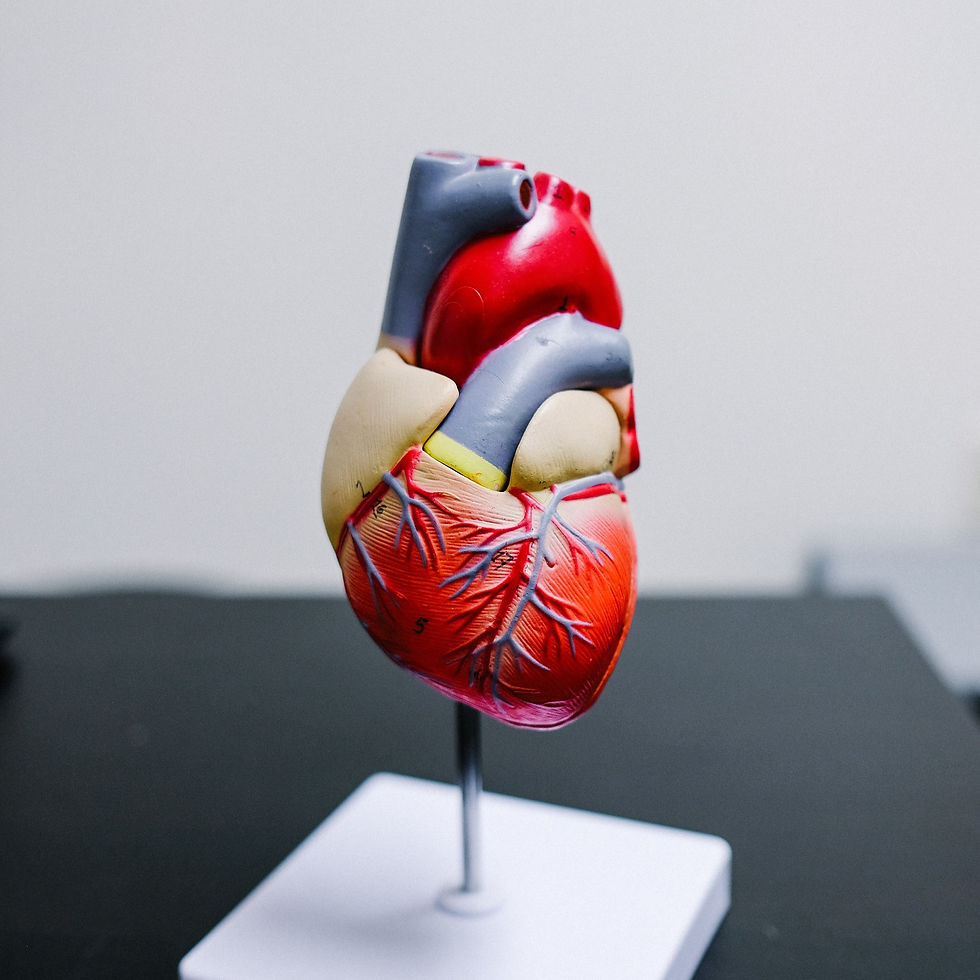Why we need cholesterol and how to manage it
- Megan

- Jan 20, 2022
- 3 min read
Updated: Feb 28, 2022
Cholesterol is a fat-soluble molecule, and a structural component of our cellular membranes, crucial for maintaining cellular membrane health and fluidity.
Cholesterol is a vital substance, also essential for the synthesis of lipid rafts which are required for cellular signalling, protein sorting and apoptosis.

Dietary cholesterol, and cholesterol which is synthesized by the body (outside of the liver tissue), make up the hepatic cholesterol pool, while cholesterol itself is also an important hormonal precursor, for vitamin D synthesis, as well as for cortisol, progesterone, aldosterone, oestrogen, and bile salts production.(Javitt)
Low density lipoprotein cholesterol (LDL-C) particles ferry cholesterol to peripheral tissues and when LDL-C particles are elevated, lipids deposit in the arterial lumen, generating the formation of plaque.
High density lipoprotein cholesterol (HDL-C) particles transport excess cholesterol from peripheral tissues to the liver for steroid synthesis, bile acid synthesis or for excretion via the bile, while bile acids and their salts are essential in the management of cholesterol.
Several factors contributing to elevated LDL-C levels include stress, diet, sedentary lifestyle, genetics, medications and other disorders such as hypothyroidism and nephrotic syndrome. (Huff et al., 2021).
Target levels:
· LDL-C <2.0mmol/L or <1.8mmol/L for high risk patients with existing cardiovascular disease (CVD)
· Total cholesterol (TC) <4.0mmol/L
· HDL-C >1.0mmol/L; non-HDL-C <2.5mmol/L
· Triglycerides (TGs) <2.0mmol/L
(National Heart Foundation, 2020).
Statins are a well-known cholesterol-lowering medication, and have been directly linked to stroke and heart attack risk reduction. (Heart Foundation, 2020). Common side effects, however, are muscular problems such as myasthenia, myalgia, muscle fatigue, cognition difficulties, and increased blood glucose . Coenzyme Q10(CoQ10) has been reported as supporting the management of these negative symptoms, with dosages ranging from 100 to 600 mg daily. (Sarris & Wardle, 2019). CoQ10 exhibits antioxidant actions, supporting endothelial function.
Reducing homocysteine (Hcy) levels, along with reducing high-sensitivity C-reactive protein, both of which have been associated with cardiovascular risk are key treatment protocols for reducing high cholesterol. (Sarris & Wardle, 2019). Loss of fat mass as well as increasing dietary fibre intake to at least 8mg/day have been reported to result in statistically significant CRP level reductions in overweight adults. (Jiao et al., 2015).
Treating oxidative stress (ROS) and reducing trans- and saturated fats through dietary modification to alter lipid profiles and reduce the production of harmful metabolites also supports the cholesterol-lowering protocol. Antioxidant vitamins are key in attenuating ROS, with both vitamin C and vitamin E showing clinically significant results in reducing hs-CRP levels, particularly at higher doses. (Sarris & Wardle, 2019).
· Lipoic acid supplementation has been shown to decrease lipid peroxidation, plasma cholesterol TGs and LDL-C while increasing in HDL-C. (Sarris & Wardle, 2019).
· While limited clinical evidence on humans is currently available, turmeric, ginger and fenugreek have been reported to reduce lipid peroxidation and improve lipid profiles in animals. (Nammour et al., 2016).
· Niacin therapy (doses not reported) for between 6 and 74 months has proven effective in improving HDL-C levels, while policosanol has shown more effective against placebo at also improving HDL-C levels and reducing TC and LDL-C levels.
· Garlic in varying forms and dosages for between 2 and 8 weeks significantly improved TC, LDL-C and HDL-C.
· Anthocyanin supplementation of between 90mg and 320mg daily for between 4 and 24 weeks showed a significant improvement in TC, TG, LDL-C and HDL-C in patients with dyslipidaemia.
· The extract of red rice yeast (RYC), containing monacolin of up to 10mg daily is the most effective cholesterol-lowering nutraceutical currently available, lowering LDL-C plasma levels between 15% and 25% within 6 to 8 weeks. (Cicero et al., 2019).
References
Cicero, A., Fogacci, F., & Banach, M. (2019). Red Yeast Rice for Hypercholesterolemia. Methodist DeBakey cardiovascular journal, 15(3), 192–199. https://doi.org/10.14797/mdcj-15-3-192
Jiao, J. (2015). Effect of dietary fibre on circulating C-reactive protein in overweight and obese adults: a meta-analysis of randomised controlled trials. International Journal of Food and Science Nutrition. 66, 114-119.
Nammour et al., (2016). Selected edible plant-derived therapies for controlling dyslipidaemia. Journal of Food and Nutrition Disorders. 5.
Sarris, J., & Wardle, J. (2019) Clinical Naturopathy (2nd Ed). Churchill Livingstone.


Comments